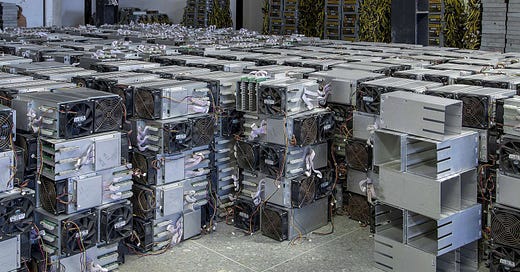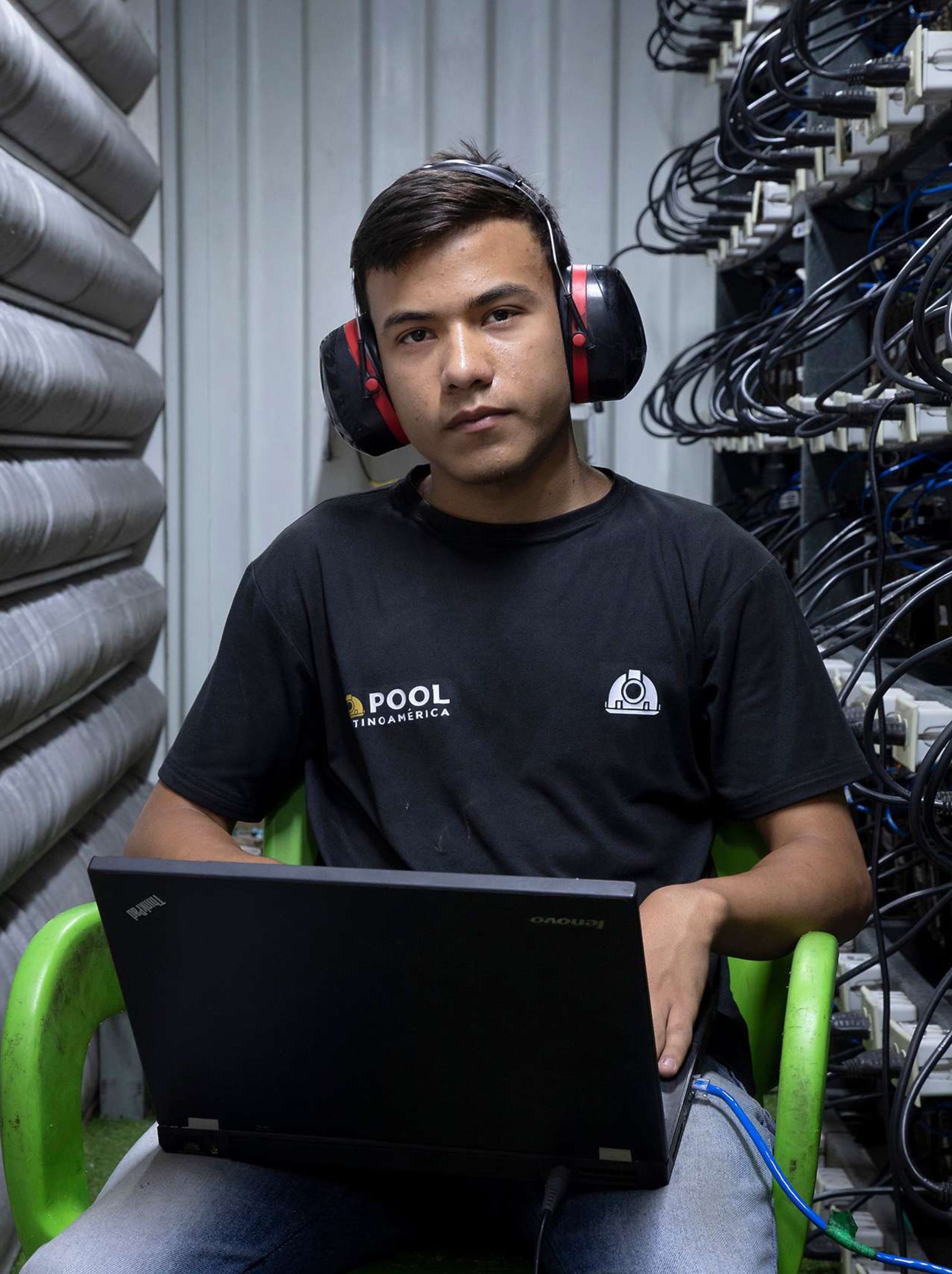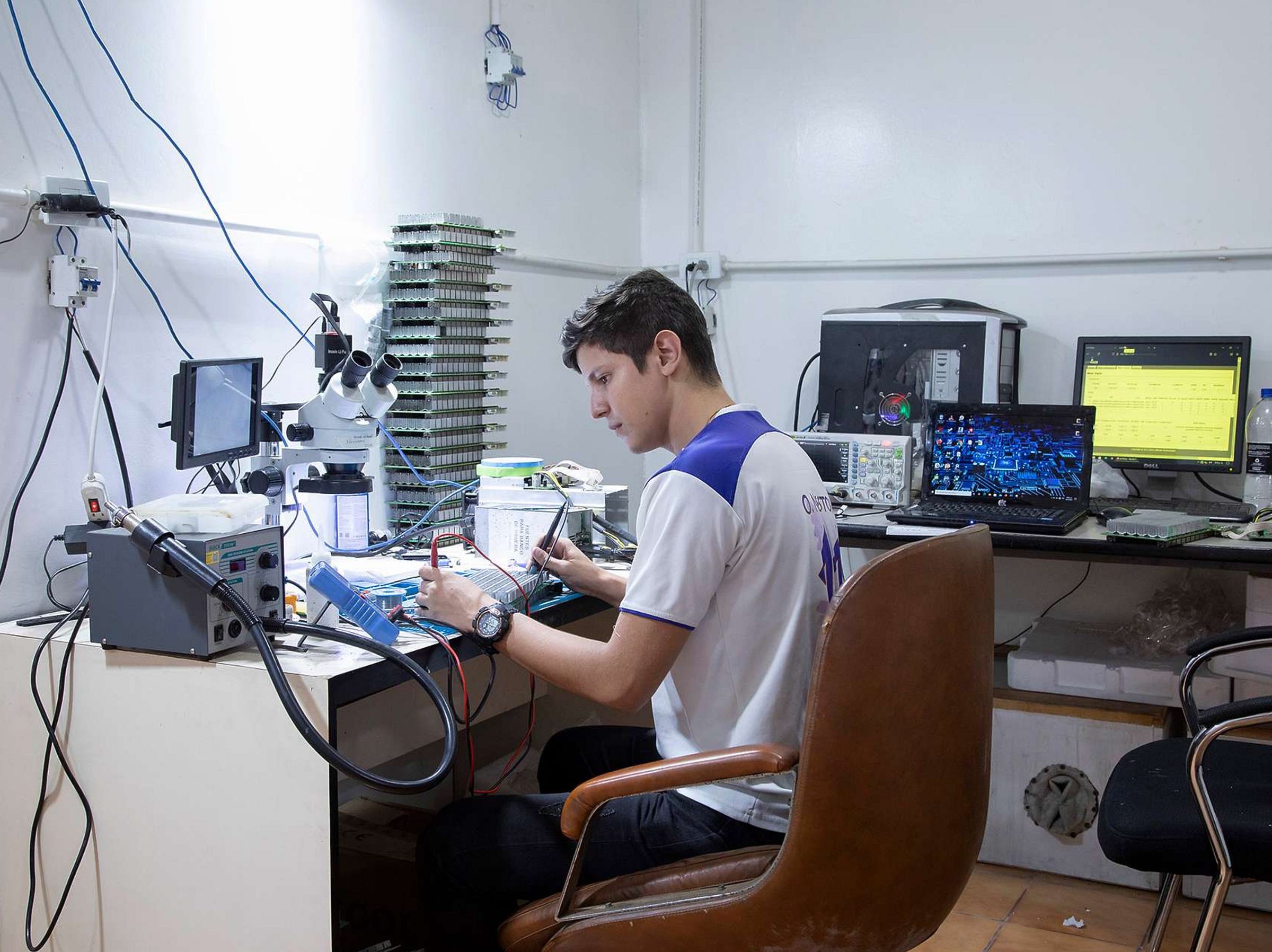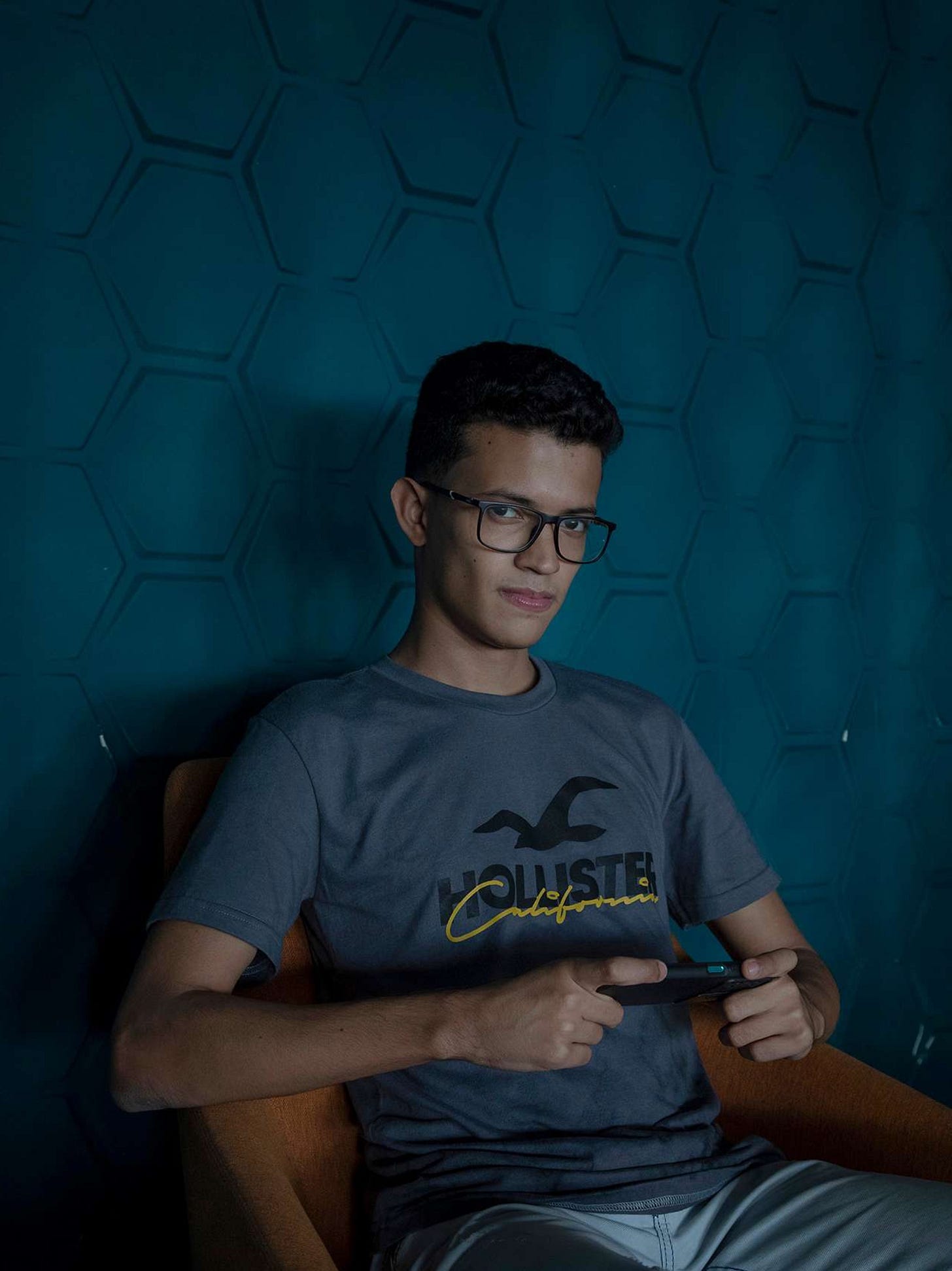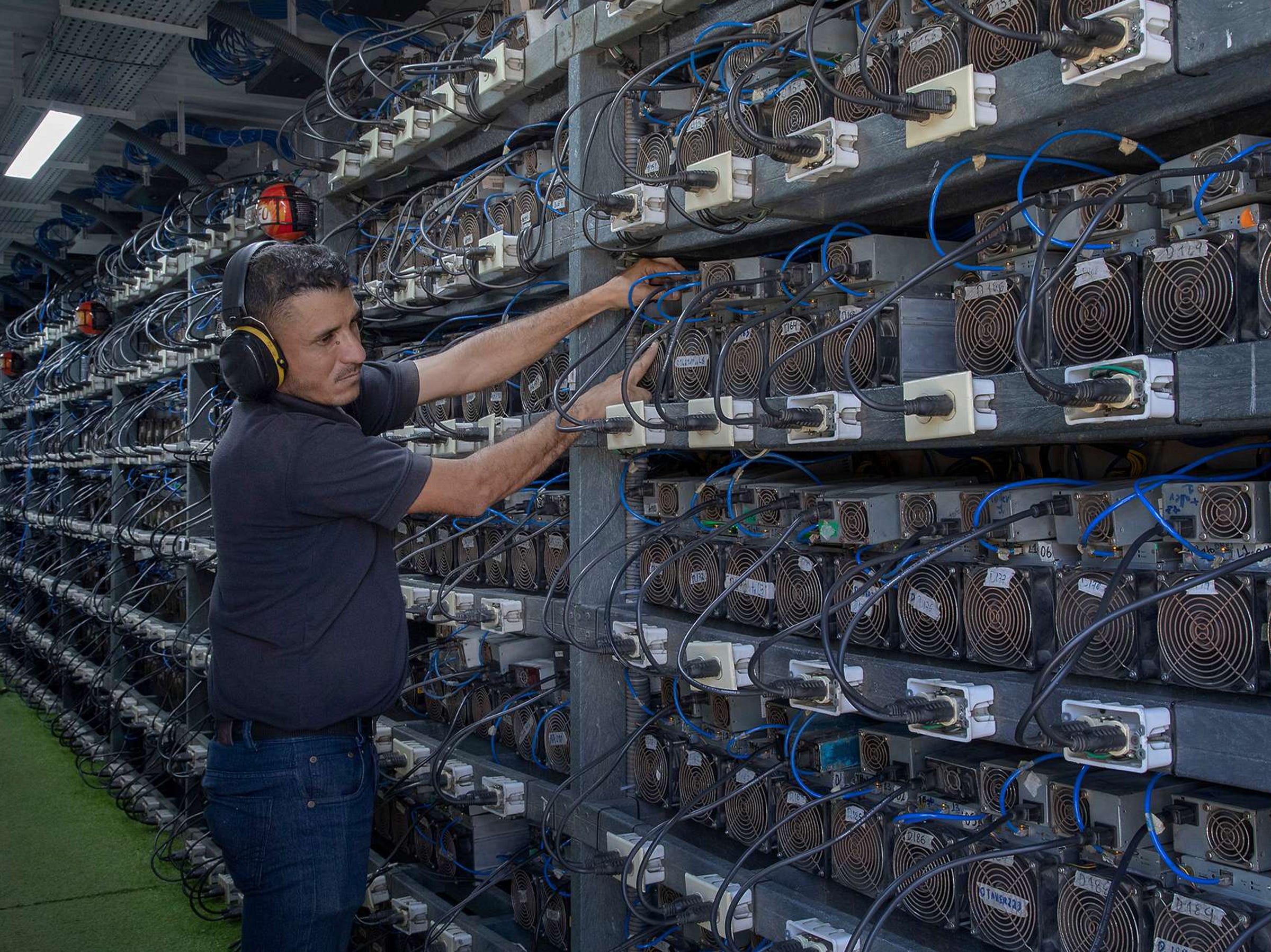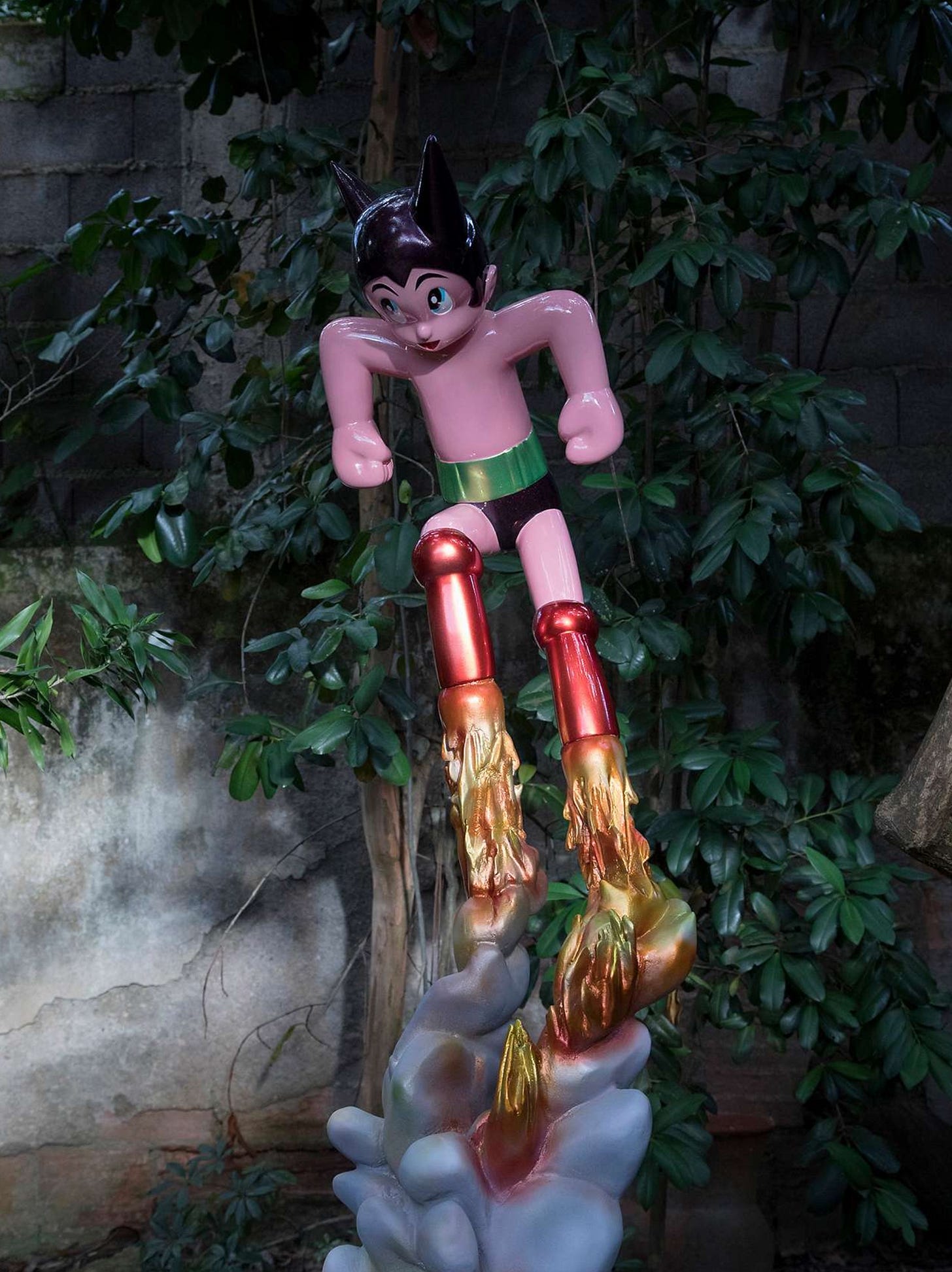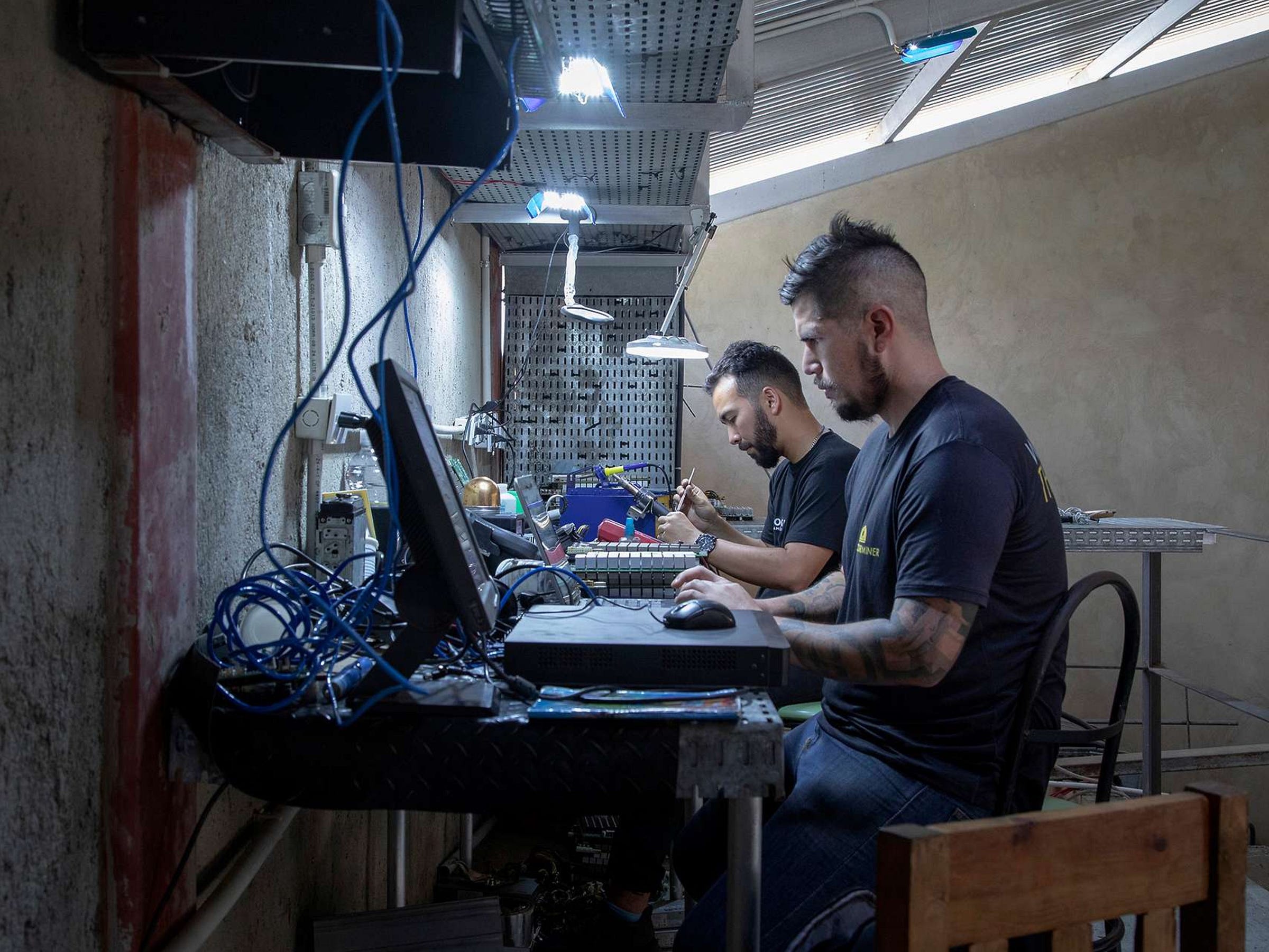#offchain
About this series
Italian photographer Pietro Paolini set out on a journey to document the launch of the controversial Petro in 2018 in Venezuela in the middle of a dramatic economical crisis. It became the first digital currency of a country at that time.
Inflation has consumed all the reserves of Venezuelans for years. What they earn today may be worthless tomorrow. According to estimates, inflation rose to an unimaginable 6,500 percent in 2020. Most Venezuelans convert their reserves into dollars, 66% of all transactions now take place in US currency. But cryptocurrencies, as in other hyperinflationary countries like Zimbabwe and Libanon, are also enjoying great popularity. Against hyperinflation, entrepreneurs and the socialist government bet on digital currencies. And many people thus regain some independence.
Fast food chains Pizza Hut and Church's Chicken as well as some supermarkets are accepting tokens such as bitcoin and dash as payment. Lot of young people are playing Play To Earn (P2E) games, where you can earn some money through NFT technology. And many Venezuelan artists started to use NFT to spread and sell their works.
Interview
First, what drew you to become a documentary photographer, and why did you decide to go the route you’ve taken thus far?
I’ve been in love with photography since I was teenager, I soon realized that this is the path I want to go in my life. In the beginning I was personally involved in politics movements and I grew up occupying empty spaces with a network of artists in Florence, my hometown. I mixed my passion for politics with photography, and documentary photography was my natural expression. My opinion was that photography could help to change the world. After 20 years I understand that photography will not change the world, but could change yourself and give tools to the people to unterstand better reality and processes of the world. I found my way step by step in documentary photography, trying to produce questions and to open new point of views through reality. Documentary photography has changed a lot since I started and I loved to experiment with different approaches in storytelling.
What is this documentary about? What does it mean to you?
This project is about the growth of blockchain usage in Venezuela. Last time as I arrived in Caracas I was surprised by the tech savvy and the knowledge of people about crypto currencies, asking and investigating I discovered an entire (new) world. I use crypto myself to solve problems of access to funds here in Venezuela, where most of bank operations are blocked by US sanctions, and I discovered that I was able to pay directly with crypto conveniently in many places. Later on I discovered how mining became one of the most developed industries of the country in this period of deep economical crisis. I also met a lot of artists and curators working with NFT and young people making a living thanks to play to earn games.
For me this story was an incredible occasion to tell about Venezuela outside the stereotypes, and let people know how a crisis could be an opportunity to develop new possibilities.
Tell us more about your process developing this documentary.
I simply started to investigate on the internet to find people or enterprises connected with the blockchain universe, and from there on I started slowly making appointments with people I was interested and that could fit the story–I focused on people, places and activities. I approached the story straight forward with a classical kind of documentary narration.
What are one or several challenges you faced when creating these works?
I think at the beginning it was a difficult to get noticed, because seen from the visual side it was not so spectacular, and many parts of the story were just possible to tell through portraits. But from time to time I found more and more interesting subjects in visual terms. In the end I had many interior spaces and not so much landscape or open views to build the rhythm and flow of the story.
It also was challenging in the beginning that not all people were open to share their story, so I needed a little time to gain peoples trust.
More than half population in Venezuela have no access to the bank system, but with a simple app they can access to cryptocurrencies. More than 5 years now after Venezuela introduced the Petro currency, do you think crypto changed for some people their live to the better? Or do you think it had no impact?
Indeed it had a lot of impact, for many years a many people survived the crisis by mining Bitcoin in their houses. Let’s remember that 85% of energy in Venezuela comes from hydroelectric sources (DRAWLIGHTS editorial note: Hydroelectricity, or hydroelectric power, is electricity generated from hydropower, water power), so it is very cheap for people. Imagine to live in a country with hyperinflation (60.000 % in 2017) and your salary and purchasing power halves every week. If you have access with an app to convert you money in stable coin connected to US$, you literaly save your life. After some years now mining, play to earn Games and NFTs became a real industry. In Venezuela people develop a lot of professional knowledges about blockchain applications and case studies for the future. The crypto world created and is creating a lot of jobs in and for Venezuela.
You also released a series of NFTs titled Buscando a Bolívar on Foundation. Can you talk about what brought you into the world of NFTs and what this series is about?
I got interested in NFTs during the summer of 2021 when I visited Venezuela. Not much later in February 2022 I minted my first collection.
The series Buscando a Bolivar is divided in 3 collections, all produced with a medium format film camera, presenting the result of my travels in Bolivia, Ecuador and Venezuela between 2009 and 2014. I documented everyday life in the countries of the New Latin American socialism during the presidencies of Evo Morales, Rafael Correa and Hugo Chavez.
I was basically interested in bringing attention back to the complexity of things and events, without necessarily having to judge. I was interested in a lateral gaze, an open language that aroused questions in the viewer without having to resolve everything in an already predefined "deployed" image. My life mixed with my photographs and my identity blended into that of a whole continent; a continent which dares always to make strong changes by raising political awareness and struggling for social progress.
Those pictures were published in many important international magazines, and also are collected as limited edition prints by private and public collections, like MAXXI Museum in Rome. Thanks to this series I won different prizes and awards, like the World Press Photo in 2012.
I’m really happy that this body of work is minted and recorded in the blockchain.
Let’s talk about the idea of a photographer as publisher or being part of a collective – do you feel it is equally important to support and promote the work of others in addition to the work one makes for themselves?
Of course! We founded our collective of photographers in 2006 with the idea to promote each others. We wanted to pool our experiences, in the belief that a shared effort makes the difference compared to the single one. Initially there was a need to be more visible and present, and immediately the idea arose of carrying out collective projects, through a real collaboration between four photographers – the group's projects are signed TerraProject – and, over time, our collective style has taken shape. This approach has allowed us to enter the market for the originality of our way of working; moreover, being four people makes it possible to produce even very extensive reportages in a short time. This proved to be very useful above all for projects intended for the publishing world. Over the years, therefore, the idea has strengthened that collective work gives its results and allows everyone to be able to continue working, even in times when one is more committed on a personal front, like some years ago when my children were born.
Do you see your role/function with the TerraProject collective as that of a photographer or business person? Or do you feel you lean more to one side versus another?
We are all photographers, business persons, and human being at the same time. But we found a good mixture thanks to the fact that we’re all different. Everyone in the collective has their own role and the bottom line is that all four of us complement each other perfectly in a way that leaves everyone room for creativity.
Artist Bio
Pietro Paolini was born in Florence in 1981. He is a member of TerraProject collective and graduated from the three years course at the Fondazione Studio Marangoni in Florence in 2005. From 2004 started to travel along South America, documenting his social and political change. His photographs have been exhibited worldwide. Awarded with many international prizes, his prints are in private and public collections.
Photographer: Pietro Paolini
Twitter: @pk_paolini
Instagram: @pietropaolini
Foundation: @pietropaolini
Collective: Terra Project
Photos copyright Pietro Paolini
DRAWLIGHTS | 1/1 – one post/one photographer, weekly. Off-chain and on-chain. By Peter Nitsch, lens-based artist, a member of Jenny Metaverse and lifetime Member of the Royal Photographic Society of Thailand.


